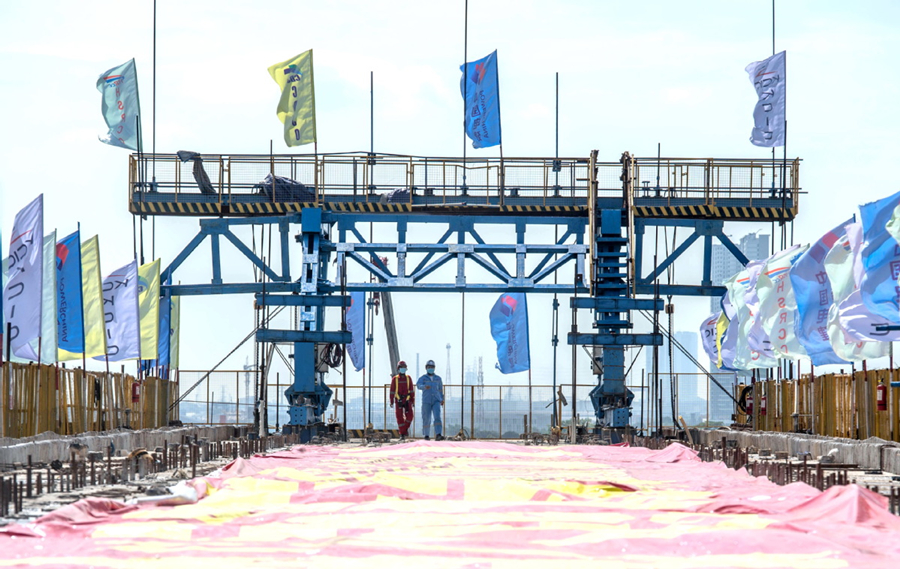BRI resilience shows China's role in recovery

Employees work at the construction site of the Jakarta-Bandung railway, Indonesia's first high-speed rail project, in March. It is being built by Chinese companies. [Photo/Xinhua]
Experts: Boosting cooperation, more opening-up both overriding trends
Despite the impact from COVID-19, economic and trade cooperation between China and economies involved in the Belt and Road Initiative has shown strong resilience, demonstrating China's firm commitment to global cooperation and sustainable recovery, experts and business leaders said.
In his keynote speech at the opening ceremony of the Boao Forum for Asia Annual Conference 2021 via video link, President Xi Jinping said that the BRI is a public road open to all, and all interested countries are welcome aboard to take part in the cooperation and share in its benefits.
China will continue to work with other parties in high-quality BRI cooperation, said Xi, adding that efforts will be made to build a closer partnership for cooperation in health, connectivity, green development, openness and inclusiveness.
The nation had signed 206 BRI cooperation documents with 140 countries and 32 international organizations as of June, covering areas like connectivity, investment, trade, finance, science and technology along with cultural and people-to-people exchanges, according to the 2021 report of China's Trade and Investment Cooperation Under the Belt and Road Initiative. The report was released in August by the Chinese Academy of International Trade and Economic Cooperation, an affiliate of the Ministry of Commerce.
Zhang Wei, CAITEC vice-president, said cooperation and opening-up remain the world's overriding trends alongside addressing uneven global economic recovery and development, and persistent challenges in the environment, climate, energy and regional security.
"Following the principles of extensive consultation, joint contribution and shared benefits, China will continue to put into practice the philosophy of open, green and clean cooperation and make the Belt and Road cooperation high-standard, people-centric and sustainable," Zhang said.
According to Bai Ming, deputy director of the international market research department at CAITEC, win-win cooperation and rising development opportunities are the hallmarks of the BRI.
China and participating countries have constantly improved multilateral and regional cooperation mechanisms to deliver down-to-earth benefits of development to people over the years, Bai said, adding that is the fundamental reason behind the BRI's growing popularity among an increasing number of countries since it was proposed in 2013.
"Through the BRI, countries and regions are able to further tap each other's potential in trade and investment, based on the principle of achieving shared growth through dialogue and collaboration," he said, adding that the spirit of the BRI is peace, cooperation, openness, inclusiveness, mutual learning and mutual benefit.
The National Development and Reform Commission said first-half trade in goods between China and BRI economies surged by 37.9 percent year-on-year to $824.55 billion. China's nonfinancial direct investment in BRI-related economies was $9.58 billion during the period, up 18 percent year-on-year, while project contracts signed stood at $39.35 billion, 10.6 percent higher.
The China-Europe Railway Express freight train service handled 7,377 trips, up 43 percent year-on-year, and carried about 707,000 twenty-foot equivalent unit containers of goods during the January-June period, said China State Railway Group Co Ltd.
The CAITEC report showed goods trade and trade in services between China and BRI economies amounted to $1.35 trillion and $84.47 billion in 2020, respectively. From 2013 to 2020, accumulated trade volume of goods between China and BRI economies reached $9.2 trillion.
Against the 35 percent year-on-year decline in global foreign direct investment last year, Chinese investors made direct investment of $18.61 billion in 58 BRI economies in 2020, accounting for 14 percent of the total investment amount over the same period, and 0.3 percentage point higher than the share a year ago.
























